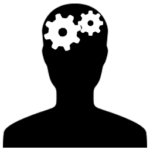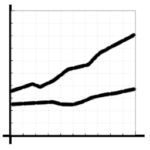If you haven’t heard of NLP yet, you probably work too much. Neuro-linguistic programming is a communication approach. Its creators (Richard Bandler and John Grinder) claim a connection between the neurological processes (“neuro”), language (“linguistic”) and behavioral patterns learned through experience (“programming”) and that these can be changed to achieve specific goals. This post will be telling about the study conducted by ClickHelp Team in December 2013, and an upcoming beta testing of a new ClickHelp feature that helps technical communicators improve their writing.
Improving Technical Writing - NLP Techniques
Read the Flaming Manual

Most technical writers agree that their readers often can’t remember what they recently read in a user manual. It is known that technical support engineers often give the same help topic link several times for the same reason – most people are not good at memorizing. As various studies indicate, it is not a problem with the readers directly, neither is this a problem with the way the content is written. It is just the way our brain works. Most of the time, it has a very broad focus of attention, trying to analyze too much inbound information.
What if the readers could remember all important points of a help topic after reading it just once…
Memory Mechanics
 Human memory is not a hard disk drive, it is more complex. When you read something, it does not mean you memorize it. However, it is a known fact that there are techniques to improve your writing to help readers better memorize it.
Human memory is not a hard disk drive, it is more complex. When you read something, it does not mean you memorize it. However, it is a known fact that there are techniques to improve your writing to help readers better memorize it.
When you start researching, you will be amazed how often the Neuro-Linguistic Programming techniques are used in the field of writing. Though human memory remains a tricky mechanism, psychologists know how to affect it – have you memorize something, or have you forget. There is a plenty of books on this subject, like these:

Memorizing Experiment
Our recent December 2013 study suggested that NLP techniques may improve the technical documentation quality, helping readers memorize the content easier. What is more important is that we have found a way to automatically process texts to improve them using certain NLP techniques. We conducted an experiment to check this theory, and the algorithm we developed.
 The experiment involved 5 professional technical writers who worked as a team. They were tasked to create a few 7-10 topic documents with the length of a topic around 400 words. The documents were user manuals for some consumer electronics. During two weeks, the technical writers worked together in an effort to produce easy-to-read documentation.
The experiment involved 5 professional technical writers who worked as a team. They were tasked to create a few 7-10 topic documents with the length of a topic around 400 words. The documents were user manuals for some consumer electronics. During two weeks, the technical writers worked together in an effort to produce easy-to-read documentation.
When the manuals were ready, we invited 78 respondents who were divided in two groups – an experimental group and a control group. Both groups were tasked to read the manuals carefully and give their feedback to help us, as they thought, with a readability test.
Needless to say that readability was not the object of this experiment. While the control group got their online manuals in the original form, the experimental group got a slightly different version.
5...4...3...?
 Sequences are all around, and the human brain is trying to find sequences in any data – it is trying to find order in chaos, this is how it works. At the same time, sequences are widely used in NLP to help the brain enter the trans state. In psychology, trance is a state of mind when the person has a narrow focus of attention – this is exactly what writers are trying to get from readers, right?
Sequences are all around, and the human brain is trying to find sequences in any data – it is trying to find order in chaos, this is how it works. At the same time, sequences are widely used in NLP to help the brain enter the trans state. In psychology, trance is a state of mind when the person has a narrow focus of attention – this is exactly what writers are trying to get from readers, right?
The sequences used in NLP may be of different nature – sounds, words, feelings, notions, colors. By using the right sequence, you can help the brain “feel the rhythm” and get a narrow focus of attention, the trans state. In our algorithm, we used the color as the sequence carrier, the color of words in the text.
A human eye can see 7 billion colors. Apparently, we don’t have names for all of them in any language. What is important is that even though you may not realize the color differences, your unconscious mind often does. We used this fact. By using slight variations of the gray color, we managed to encode the needed sequence into the online manuals of the experimental group. Most subjects did not notice anything. Those who did, thought this was a monitor artifact, as we found out later. So, the only difference between the groups was the text color variations built into the text by our algorithm to encode a specific sequence, dependant on the text structure.
Experiment Results
 In a week after the first part of the experiment, we invited the same respondents. We gave them tests with the questions asking about the things they read in the manuals seven days ago. This is how the test results looked like for the two groups:
In a week after the first part of the experiment, we invited the same respondents. We gave them tests with the questions asking about the things they read in the manuals seven days ago. This is how the test results looked like for the two groups:
| Control Group | Experimental Group | |
|---|---|---|
| Minimum Score | 40% | 68% |
| Maximum Score | 63% | 79% |
| Average Score | 48% | 73% |
As you can see, the experimental group was much more successful with the test questions. When dividing the respondents into groups, we took into account a lot of parameters to make sure the groups are balanced. After making more analysis, we concluded that the result were actually related to how the text was processed by our algorithm!
This new algorithm will be available for limited beta testing in June 2014, as an additional function of ClickHelp – our technical writing tool . Apparently, this new function will change the technical writing industry to the better!
Does it Really Work?
Hopefully, you have carefully read the announcement text. The thing is that it was also processed by the same algorithm.
If you want to take part in the beta-testing of this new functionality in the next ClickHelp release, please contact us:
Apply for Beta Testing
Happy Technical Writing!
ClickHelp Team
Announcement Date: 2014/04/01